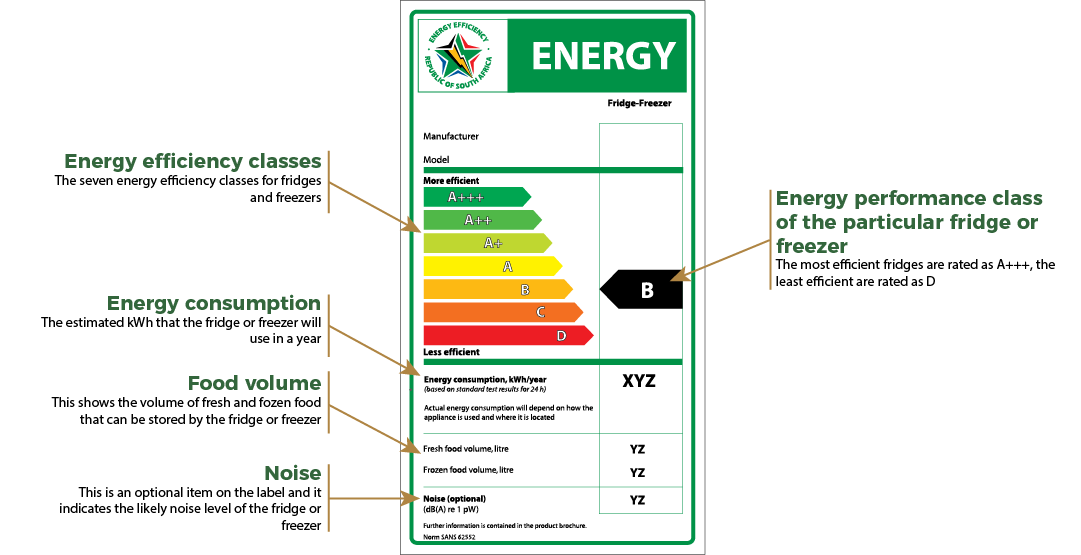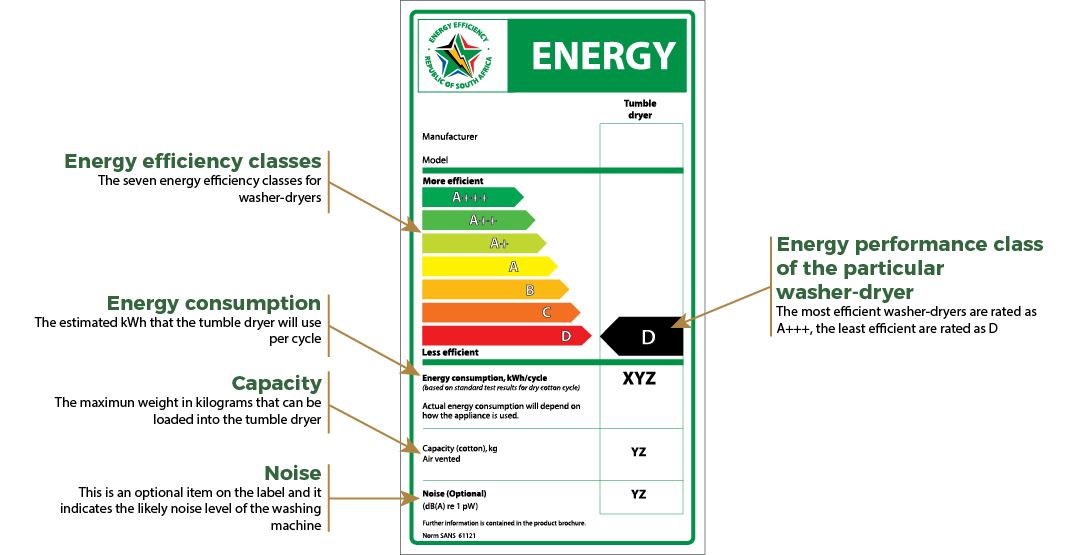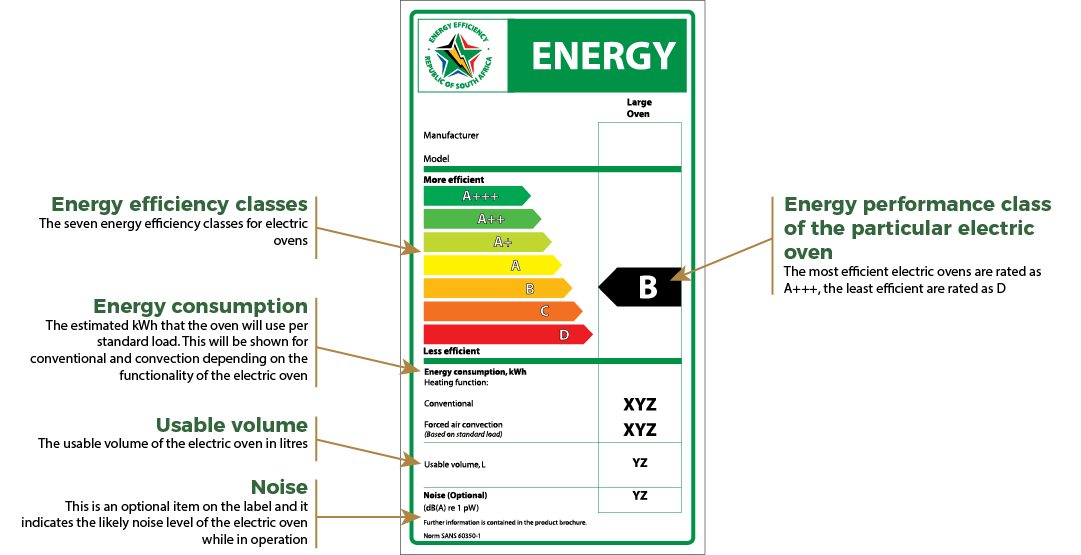Light Bulbs
Individually, light bulbs are not major energy consumers in households, however when considered collectively, they use a significant amount on electricity in a household. Consumers should therefore carefully consider their choice of light bulbs before making a decision to purchase them.
The most important decision to be made when purchasing light bulbs is which technology to use. There are currently three technologies available in the market:
- Incandescent light bulbs: This is an extremely old lighting technology and is very energy inefficient. These light bulbs will ultimately be phased out of the South Africa market.
- Compact florescent lights (CFLs): CFLs are considerably more energy efficient than incandescent light bulbs and they also have a much longer life span. Unfortunately CFLs contain a very small amount of mercury. Mercury is toxic to humans and as a result, careful precautions need to be taken if a CFL is broken. In addition they require responsible disposable as the mercury constitutes hazardous waste.
- Light-Emitting Diodes (LEDs): LEDs are the most advanced lightning technology on the market. LEDs are the most energy efficient of the light bulbs available on the market and they also have a considerably longer lifespan than both CFLs and incandescent light bulbs. When LEDs were first introduced into the market, the costs were extremely high relative to other lights, however, the prices of LEDs have come down considerably in recent years, making the purchase of LEDs much more affordable to consumers.
In general LEDS are by far the best lightning technology to purchase as a result of the long lifespan of the lights and the small amounts of electricity needed to run LEDs. However, consumers often battle with selecting the correct light for their needs. There are two major questions that a consumer should consider when purchasing a new light:
- What amount of light is required? This refers to how bright a light bulb should be and the technical term for this is light output. Light output refers specifically to the amount of light provided by a light bulb, and is measured in lumens. Some light bulbs might show a lux value instead of number of lumens which shows the number of lumens per square metre. Before making a purchase of a light bulb, consumers should decide on whether a bright or dim light is required and select a light bulb with a lumen or lux value that meets the specific requirements.
- What colour of light is required? Consumers are often not aware of the different colours of lights and how that impacts on the experience of using lights. The colouring of a light is called its colour temperature and is measured in Kelvins. Incandescent lights have a warm, yellowish white colour which is generally between 2,700 to 3,000 Kelvins. As Kelvins go up, light becomes cooler or blueish white. Consumers should identify the colour temperature they prefer for a given light and ensure that they choose a light with the appropriate number of Kelvins.
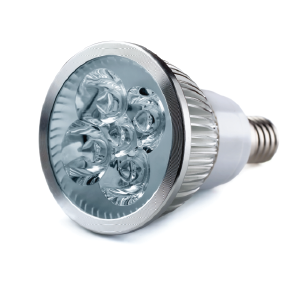
Understanding the energy efficiency label
A South African Energy Efficiency Label has been designed for light bulbs (electric lamps), however, it is currently not mandatory for light bulbs to be labelled. The image below shows a sample of a label that you find on a lightbulb (electric lamp) with an explanation of the key elements of the label.
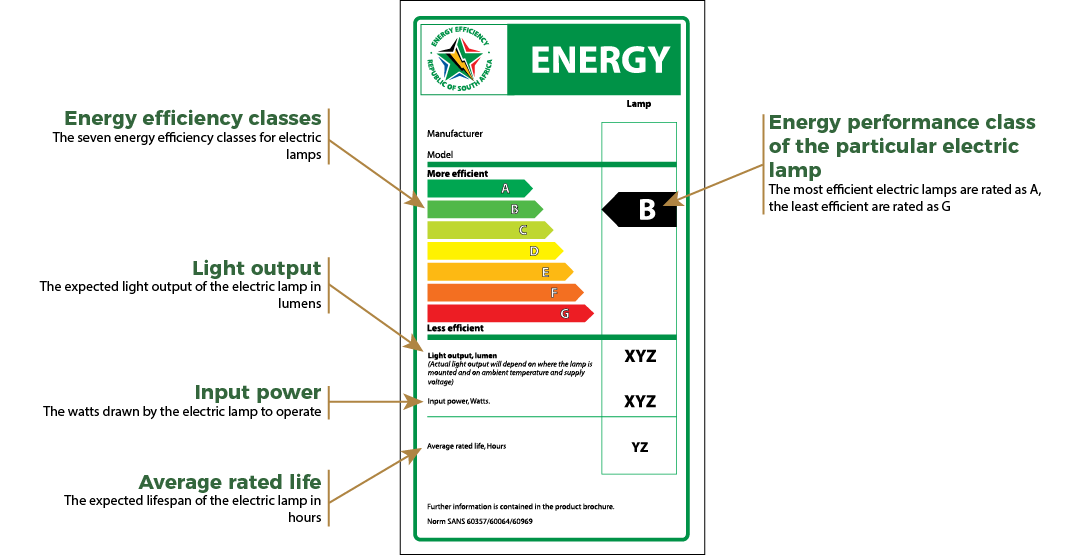
Calculating how much the appliance will cost to run
To calculate the annual running costs of light bulbs (electric lamps), divide the watt (W) figure given on the label by 1000 to convert to kW. Next, multiple by the number of hours you are likely to use the light each day and multiply by 365 days. Finally, multiply by the cost of electricity in your municipality. You can find the kWh cost of electricity in your municipality by looking at your electricity bill.
For example if the label indicates that the electric lamp will use 40 W and where you live a kWh of electricity costs R2 (including VAT), the cost of running the electric lamp that you use 4 hours a day will be R116.80 for the year.
Appliance Energy Calculation Tools were created to aid consumers to make more informed decisions by calculating the long term cost for running an appliance. Click here to calculate the running costs and CO2 emissions for light bulbs.
{Wattage of light bulb (electric lamp)}
/ {1000}
x {number of hours used per day}
x {365 days in a year}
x {Cost of Electricity in your municipality}
= Annual running cost of use the lamp
40 W / 1000 X 4 hours per day X 365 days in a year X R2 per kWh = R116.80
Tips for using your appliance most efficiently
 Turn off lights in unoccupied rooms
Turn off lights in unoccupied rooms
Leaving lights on when no one is in a room consumes energy unnecessarily. Ensure that lights are switched off in unoccupied rooms.
 Use natural light
Use natural light
Use natural lighting where possible. Only switch on lights when there is not enough sunlight.
 Select bulbs with the lowest appropriate wattage
Select bulbs with the lowest appropriate wattage
Different types and amounts of lights are needed for different rooms and uses. Select a bulb with the lowest appropriate wattage for the room.






